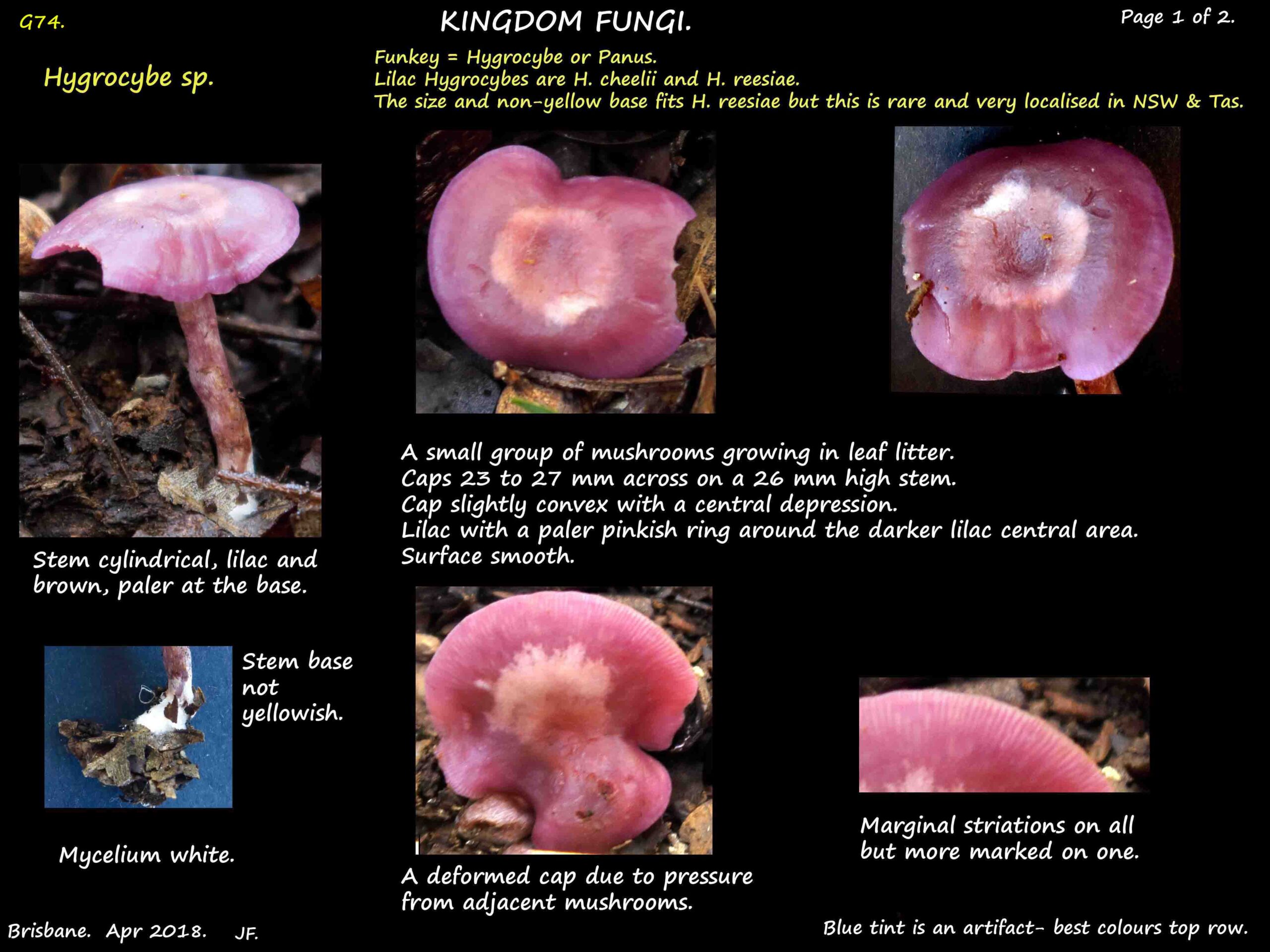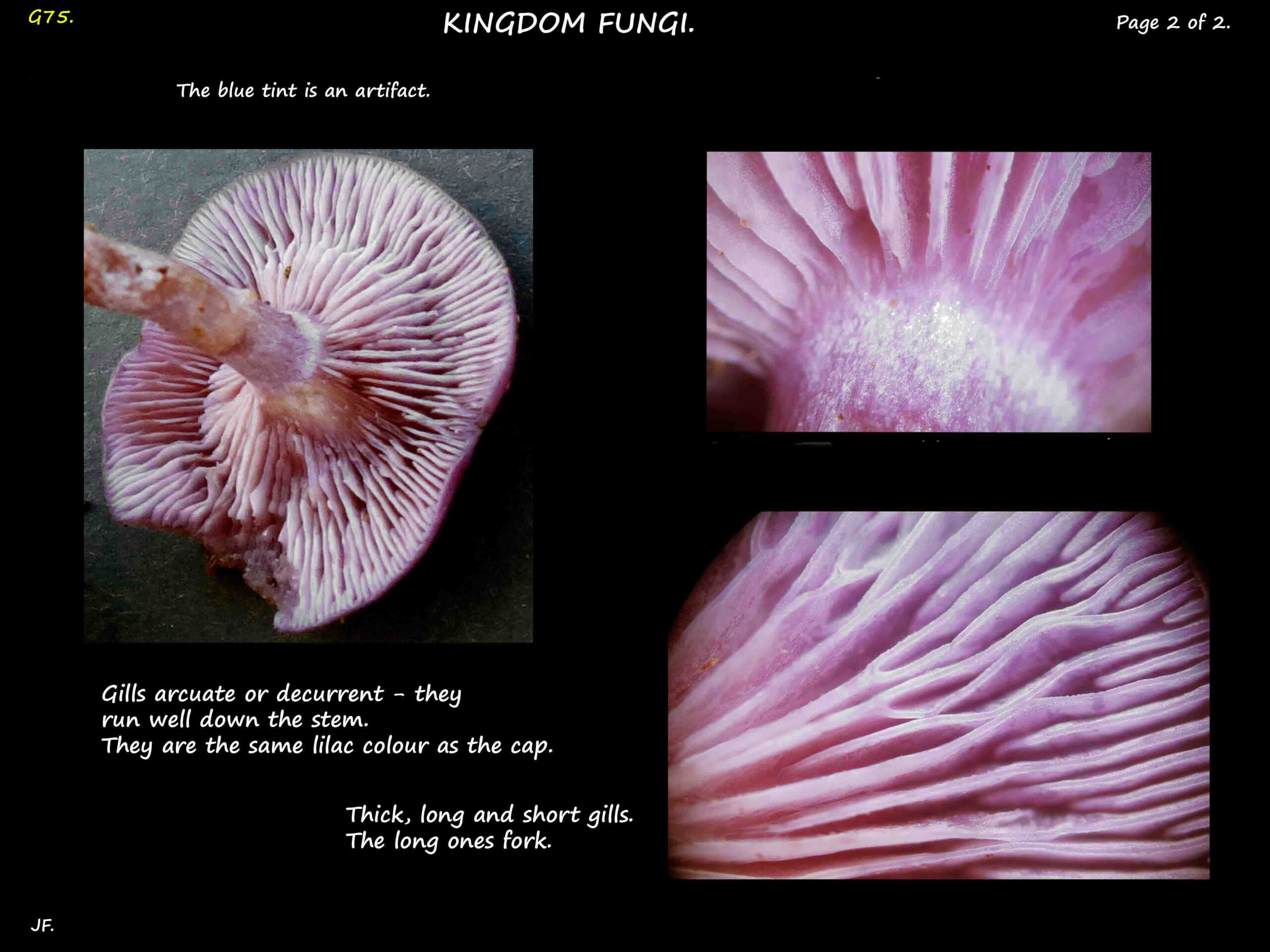Hygrocybe.
Basidiomycota > Agaricomycetes > Agaricales > Hygrophoraceae.
About 150 species, commonly known as wax caps as many are waxy or slimy especially when wet.
Found on the soil, or occasionally on wood, where they form beneficial relationships with the roots of mosses.
They can be roughly divided into 2 groups based on appearance:
- Medium to large, convex, slimy caps that are white, pale yellow, brown, pink or grey.
- Others are smaller, thin-fleshed, convex to conical, slimy or dry and often brightly coloured in shades of red,
yellow, orange, purple or green.
Many of these need microscopy to identify them.
The surface may be smooth or slightly scaly, dry, or slimy when damp.
Debris stuck to a dry cap could indicate that the surface was slimy when wet.
Gills may be slightly or widely attached to the stem, run down it or rarely, be free.
They are thick, waxy, and often the same colour as the cap.
Spore print commonly white but may be cream, yellow, grey or mauve.
The central stem may be slimy and it has no ring.
Hygrocybe cheelii.
Previously known as Cantharellus lilacinus.
An uncommon mushroom growing among leaf litter or moss.
Cap often about 40 mm across but may be more, initially convex then depressed and it may be
deformed when growing in groups.
The edge is rolled in, the surface smooth or finely velvety and not striated.
Colour may vary from bright pinkish mauve to lilac, paler near the margin.
Gills are distant, run down the stem (decurrent or arcuate) and are a similar colour to the cap.
They are thick and may fork near the cap edge.
The cylindrical stem, up to 50 mm high, is a similar colour to the cap.
The base of the stem is slightly swollen and yellowish.
Spore print is white.
All parts are slimy when wet.
Hygrocybe reesiae.
Grows singly or in groups, on the ground and rarely on wood.
Cap 10 to 20 mm across, convex with a central depression.
Bright lilac or a pinkish shade which fades to a lilac buff as it ages.
It is smooth, dry and with an even margin.
The thick, distant gills run down the stem.
They are a mix of long and short and they are lilac or violet.
Stem is cylindrical, hollow, up to 30 mm tall and 3 mm wide.
It is dry, smooth and lilac to buff but darker at the top.
It never has the yellow base of H. cheelii.
A rare species found in small areas in N.S.W. (vulnerable species) and Tasmania.
J.F.



